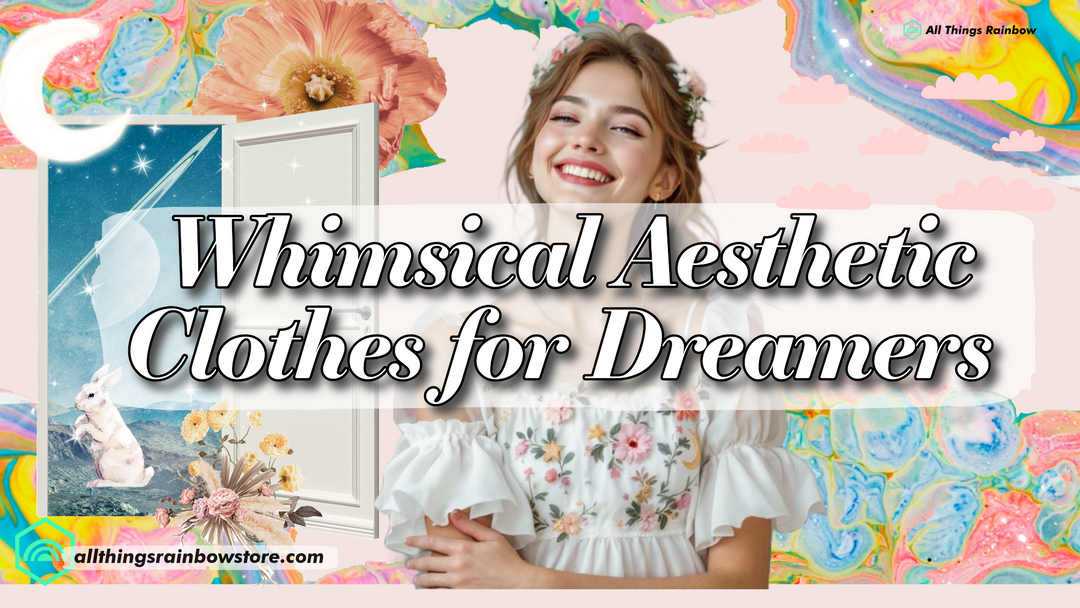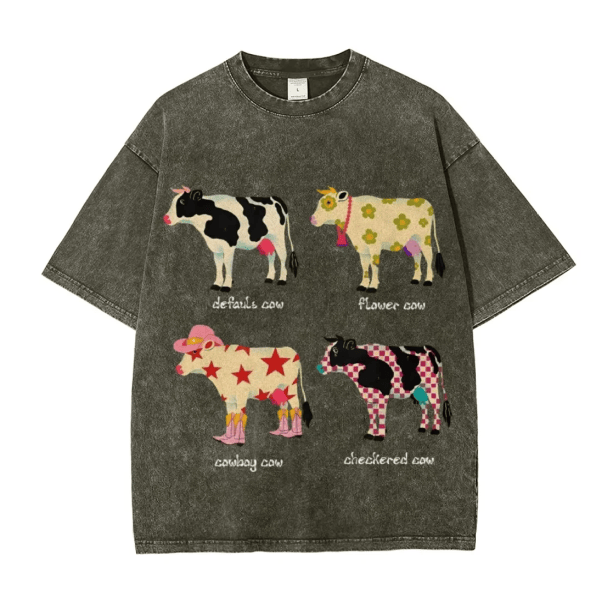Exploring Ghostcore: The Ethereal Allure of the Ghost Aesthetic
Welcome to the world of Ghost Aesthetic. From vintage lace dresses and candlelit rooms to the quiet solitude of nature, Ghostcore resonates with those who find beauty in the melancholic and the mysterious, offering a serene yet haunting escape into a world where the unseen holds as much significance as the visible.
IN THIS ARTICLE
QUICK GUIDE TO GHOST AESTHETIC
Main Characteristics Of Ghost Aesthetic
Origins Of Ghostcore
Gostcore Activities
Main Characteristics Of Ghost Aesthetic
The "ghost aesthetic" is a visual and thematic style that evokes the ethereal, eerie, and often melancholic qualities associated with ghosts and the supernatural. Here are the main characteristics:
Visual Elements:
-
Color Palette: Dominated by pale, muted colors such as whites, grays, and soft blues, often with a washed-out or faded look.
-
Lighting: Soft, diffused lighting with an emphasis on shadows and highlights, creating a sense of mystery and otherworldliness.
-
Textures: Use of translucent, delicate, and ethereal textures like lace, gauze, mist, and fog.
-
Imagery: Common motifs include spectral figures, abandoned places, old photographs, antique objects, and elements of decay and dereliction.
-
Nature Elements: Foggy landscapes, moonlit nights, and overgrown, neglected gardens.

Themes:
-
Melancholy and Nostalgia: A sense of longing for the past, often tied to themes of loss and memory.
-
Mystery and the Unseen: Emphasis on the unknown and the unseen, invoking curiosity and a sense of the uncanny.
-
Transience and Ephemerality: Focus on the fleeting nature of existence, with imagery that suggests impermanence and the passage of time.
-
Solitude and Isolation: Often depicts solitary figures or empty spaces, highlighting feelings of isolation and introspection.
-
Supernatural and Haunting: Elements of the paranormal, including ghosts, spirits, and otherworldly presences, creating a sense of unease and suspense.

Fashion and Style:
-
Clothing: Flowing, vintage-inspired aesthetic clothing, often in light fabrics like chiffon and lace. Pale, monochromatic outfits are common.
-
Accessories: Antique jewelry, veils, and other delicate adornments that evoke a bygone era.
-
Makeup: Pale, ethereal makeup with emphasis on soft, ghostly features, sometimes with dark, shadowy eyes or lips.

Media and Influences:
-
Art and Photography: Works that capture the essence of the ghost aesthetic often feature ethereal, surreal compositions, playing with light and shadow.
-
Literature and Film: Gothic literature, ghost stories, and horror films that explore themes of the supernatural and the uncanny.
-
Music: Haunting, melancholic melodies, often with ethereal vocals and atmospheric soundscapes.

Overall, the ghost aesthetic blends visual and thematic elements to create a sense of the eerie, the beautiful, and the otherworldly.
Origins Of Ghostcore
Ghostcore, also known as the ghost aesthetic, is a subculture and aesthetic that draws inspiration from a variety of sources, blending elements from folklore, literature, art, and contemporary media to create a distinct style. Here are some key origins and influences:
Folklore and Mythology:
-
Ghost Stories and Legends: Ghostcore is deeply rooted in the rich tradition of ghost stories and legends from various cultures. These tales often explore themes of the supernatural, the afterlife, and the unknown.
-
Mythical Spirits: Many cultures have their own myths about spirits and apparitions, which have influenced the imagery and themes of ghostcore. Examples include the yūrei from Japanese folklore and banshees from Irish mythology.

Gothic Literature:
-
19th Century Gothic Novels: Works like Mary Shelley's "Frankenstein," Bram Stoker's "Dracula," and Edgar Allan Poe's stories have had a significant impact on the ghostcore aesthetic. These texts often feature eerie settings, supernatural occurrences, and a sense of melancholy.
-
Romanticism: The Romantic era's fascination with the sublime, the mysterious, and the otherworldly has also influenced ghostcore, with poets like John Keats and Lord Byron contributing to its themes of beauty and sorrow.

Art and Photography:
-
Victorian Mourning Art: The Victorian era's elaborate mourning customs, including mourning jewelry and post-mortem photography, have influenced the ghostcore aesthetic with their emphasis on death, memory, and loss.
-
Surrealism and Symbolism: Artistic movements that explore the subconscious and the mystical, such as Surrealism and Symbolism, have also contributed to the ethereal and dreamlike qualities of ghostcore.

Film and Television:
-
Classic Horror Films: Early 20th-century horror films, particularly those from the silent era and the Universal Monster movies, have shaped the visual language of ghostcore with their haunting atmospheres and iconic imagery.
-
Modern Horror and Supernatural Shows: Contemporary films and TV series that explore ghostly themes, such as "The Others," "The Sixth Sense," and "American Horror Story," continue to influence the aesthetic.

Music:
-
Darkwave and Ethereal Wave: Music genres that emphasize melancholic and atmospheric soundscapes, such as darkwave and ethereal wave, have a strong connection to the ghostcore aesthetic. Bands like Cocteau Twins and Dead Can Dance are notable examples.
-
Goth and Post-Punk: The goth and post-punk music scenes, with their emphasis on dark, moody, and introspective themes, have also played a role in shaping ghostcore.

Internet Culture:
-
Tumblr and Social Media: Platforms like Tumblr, Instagram, and Pinterest have allowed for the rapid spread and evolution of aesthetic subcultures, including ghostcore. Users share and curate images, fashion, and art that embody the ghostly and ethereal qualities of the aesthetic.
-
DIY and Personal Expression: The ghostcore community often embraces a DIY approach to fashion and art, creating personalized and unique interpretations of the aesthetic.
Overall, ghostcore is a multifaceted and evolving aesthetic that draws from a wide range of historical, cultural, and contemporary sources. It embodies a fascination with the eerie, the melancholic, and the otherworldly, creating a unique blend of beauty and haunting mystery.
Gostcore Activities
Ghostcore activities often revolve around appreciating the eerie, ethereal, and supernatural elements of life. Here are some common activities associated with the ghostcore aesthetic:
Creative Activities:
-
Photography: Taking and editing photos with a ghostly, ethereal vibe. This might include using foggy landscapes, abandoned buildings, or vintage filters.
-
Writing: Creating poetry, short stories, or journaling with themes of ghosts, the supernatural, melancholy, and nostalgia.
-
Art and Craft: Drawing, painting, or crafting items that reflect ghostcore aesthetics, such as spectral figures, haunted houses, and otherworldly landscapes.
-
DIY Projects: Making your own ghostcore-inspired clothing, accessories, and home decor items.
Exploring the Supernatural:
-
Visiting Haunted Places: Exploring reputedly haunted locations, such as old houses, cemeteries, or abandoned buildings.
-
Ghost Tours: Taking guided tours of historically haunted sites to learn about local ghost stories and legends.
-
Paranormal Investigations: Participating in or following ghost hunting and paranormal investigation activities.
Enjoying Media:
-
Reading: Delving into gothic novels, ghost stories, and horror literature. Authors like Edgar Allan Poe, Mary Shelley, and Shirley Jackson are popular choices.
-
Watching Films and TV Shows: Enjoying movies and series with ghostly themes, such as "The Others," "The Haunting of Hill House," and "Crimson Peak."
-
Listening to Music: Creating playlists with ethereal, haunting music, often including genres like darkwave, ethereal wave, and goth rock.
Nature and Solitude:
-
Night Walks: Taking walks at night, especially in foggy or moonlit settings, to appreciate the quiet and mysterious atmosphere.
-
Exploring Overgrown Gardens and Forests: Visiting places where nature has taken over, creating a sense of decay and renewal.
-
Stargazing: Watching the night sky, especially during quiet, solitary moments.
Personal Reflection:
-
Meditation and Introspection: Spending time in quiet reflection or meditation, often in settings that evoke the ghostcore aesthetic.
-
Creating Mood Boards: Curating collections of images, quotes, and other media that embody the ghostcore vibe.
Fashion and Style:
-
Dressing in Ghostcore Fashion: Wearing flowing, vintage-inspired clothing in pale, muted colors, often accessorized with antique jewelry and other ethereal accessories.
-
Makeup and Hair: Experimenting with ghostcore-inspired makeup and hairstyles, such as pale, ethereal looks with dark, shadowy accents.
These activities help immerse enthusiasts in the ghostcore aesthetic, allowing them to explore and express their fascination with the eerie, the melancholic, and the otherworldly.
Summary
In essence, ghostcore is more than just an aesthetic; it's a journey into the ethereal and the unknown, a celebration of the delicate balance between beauty and melancholy. It invites us to explore the stories that linger in the shadows, to appreciate the transient nature of life, and to find solace in the quiet moments of introspection. Whether through fashion, art, literature, or personal exploration, ghostcore offers a unique way to connect with the past and the unseen, creating a hauntingly beautiful tapestry that resonates with those who find magic in the mysterious and the melancholic. Embrace the ghostcore aesthetic, and let it whisper to you the tales of the forgotten and the spectral, enriching your life with its haunting charm.


















Leave a comment